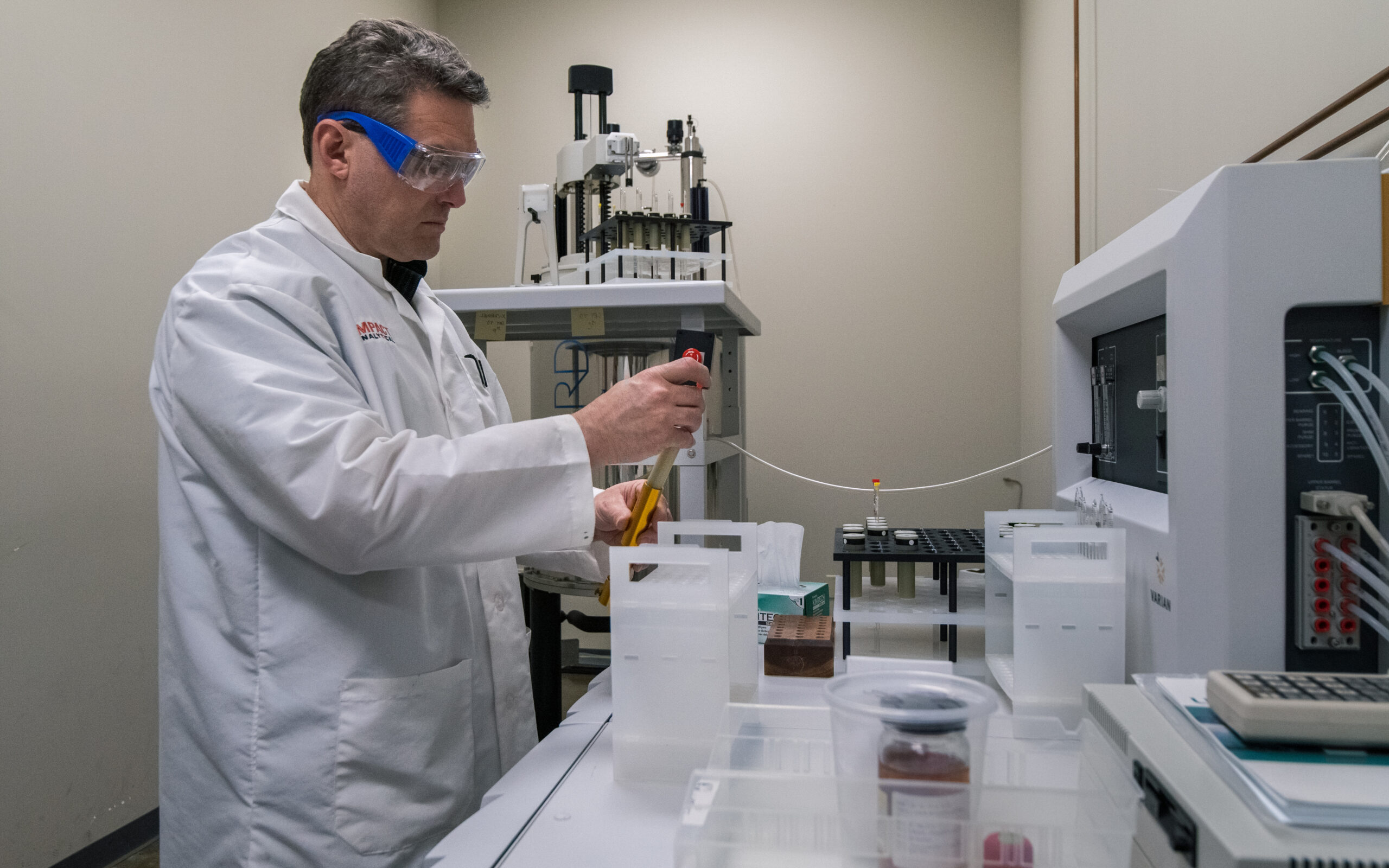-Techniques-
Titration, Karl Fischer
In most manufacturing or processing industries, it is essential to know the concentration of a product, a species, or a chemical function in order to ensure the efficiency of a process or the quality of a finished product. Titration is an efficient and accurate way to determine this. In order to determine the concentration of an analyte, it must dissolve and react with another species in a solution of known concentration (the titrant). This can be performed manually or automatically. It remains to determine the point at which titrant amount is equivalent to the analyte amount. Once the operator has perfectly characterized the reaction between the analyte and the titrant, the concentration or the exact quantity of the analyte can be determined by simple calculation.
Types of Titration
Acid/Base Reactions
These involve the reaction of Hydrogen+ with a hydroxide ion to form water. They are the most common in both aqueous and non-aqueous media and are used every day in a wide range of applications such as:
- alkalinity determination in water,
- acid content in wine or fruit juice, milk
- TAN and TBN in petroleum products, edible or inedible oils and fats,
- determination of boric acid in cooling fluids of nuclear power stations,
- determination of free or total acidity in plating baths,
- determination of active ingredients in drugs or raw materials for the pharmaceutical industry,
- total nitrogen determination using the Kjeldahl technique.
Redox Reactions
As their name implies, these reactions make use of the reactivity of the oxidizing/reducing pair. During the reaction, the oxidizing ion, whether it is the analyte or the titrant, is reduced by gaining one or more electrons as the reducing ion is oxidized, losing one or more electrons. Some applications of these titrations include:
Fields of application
- Environment samples
- COD of water.
- Oxidation capacity of water by permanganate.
- Food and beverage
- Determination of free and total SO2 in water, wine, alcohol, dried fruit etc.
- Vitamin C determination.
- Surface treatment
- Titration of copper or tin using iodine.
- Titration of chromium VI.
- Determination of water in hydrocarbons.

Complexometric Reactions
These are mainly used to determine the concentration of divalent cations such as calcium, magnesium, copper, lead, zinc and cadmium as well as other cations such as aluminium.
The most commonly used complexing agents are ethylenediaminetetraacetic acid (EDTA) and ethylenebis (oxyethylenenitrilo) tetracetic acid (EGTA). Some applications include:
Fields of application
- Environmental samples
- Total hardness of water
- Surface treatment
- Determination of Cu2+, Ni2+, Pb2+, Zn2+in plating baths.
- Cement works
Ready to Get Started?
Give us a call and speak with an actual scientist.

